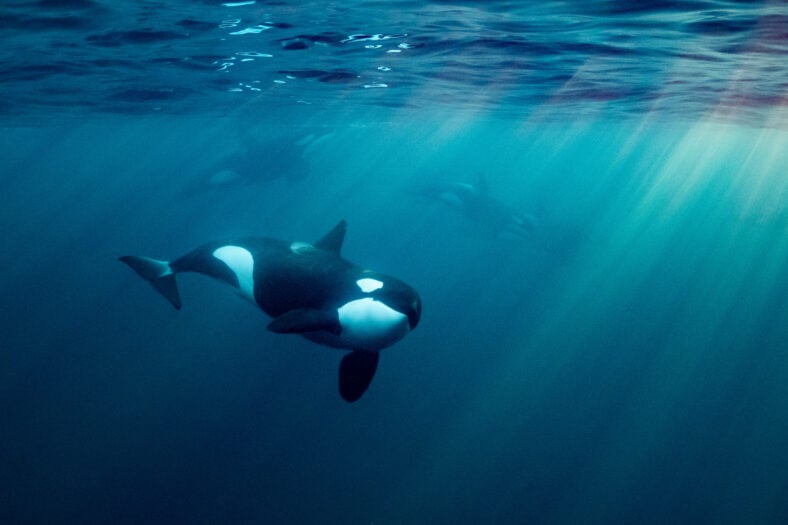This Orca Mom Has Sadly Been Seen Carrying A Second Dead Calf

Six years ago, an endangered orca whale was spotted carrying a dead calf around on her head for over two weeks. Now, that same orca has been seen carrying another dead calf.
Tahlequah the orca, also known as J35, made headlines in 2018 for her display of grief, which involved pushing her dead calf for about 1,000 miles through the ocean until she finally let go. Later, she was able to raise two other calves with success. But recently, it appears that she has suffered yet another loss.
Researchers at the National Oceanic and Atmospheric Administration (NOAA) observed Tahlequah carrying a dead newborn calf in Puget Sound off Seattle on New Year’s Day.
“This is an unfortunate way to start the new year with the news that southern resident killer whale J35 has lost another calf and is again keeping it with her,” said Michael Milstein, an NOAA public affairs officer.
“She is, of course, known around the world for carrying her earlier calf for 17 days in 2018, which was heartbreaking at the time. It’s that much harder to see now that she has lost another one.”
Southern resident killer whales are protected under the U.S. Endangered Species Act. For decades, they have been struggling to pull through.
There are three main reasons for their decline, including pollution, boat disturbances, and lack of prey (Chinook salmon).
Between 2008 and 2014, almost 70 percent of southern resident killer whale pregnancies failed, with a third of the pregnancy losses occurring late in gestation or right after birth. Tahlequah’s latest calf was believed to have lived for only a week before it died.
The scientists first noticed the calf, a female named J61, in the Puget Sound area on December 20. The calf was still alive three days later, but the team was worried about the state of its health.

Sign up for Chip Chick’s newsletter and get stories like this delivered to your inbox.
It appeared to be struggling to stay afloat when it surfaced, and Tahlequah seemed to be pushing it along even when it was alive.
On New Year’s Eve, a team with the Center for Whale Research (CWR) discovered that J61 had not survived. The cause of the calf’s death is unknown, but the researchers think that J61 was born prematurely.
Tahlequah may have been the one to become famous for such behavior, but she is far from the only marine creature to carry dead offspring. The behavior is interpreted as a sign of grief.
“We know that the bond between killer whale mothers and their offspring is incredibly strong, about as strong as a social bond can be,” said Michael Weiss, the research director of CWR.
“We know that J35 is not ready to let go. I think that is as far as we can, or need, to interpret her emotional state at this point.”
NOAA will continue to watch over Tahlequah and her pod. The organization has hope for the pod’s future, especially since there was another recent birth.












